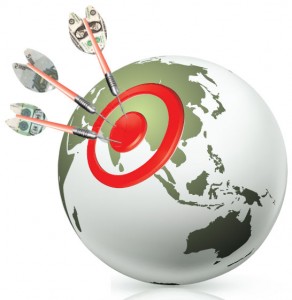 Global trade f lows rebounded across many regions in 2010, according to the International Chamber of Commerce (ICC) Trade and Finance Global Survey 2011, but high-pricing meant that traders in many low-income countries still faced difficulties accessing affordable trade finance.
Global trade f lows rebounded across many regions in 2010, according to the International Chamber of Commerce (ICC) Trade and Finance Global Survey 2011, but high-pricing meant that traders in many low-income countries still faced difficulties accessing affordable trade finance.
Representatives from 210 banks in 94 countries responded to the survey, which asked for their opinion, as well as statistics, on the current trade finance landscape in their respective countries. This survey, the fourth consecutive ICC poll of its kind, registered 30 per cent more responses than in the previous year.
Recovery worldwide has been driven by increased trade in North America, Europe and Asia, as well as between Asia and the rest of the world, according to the survey. Other regions, especially Africa, continued to have “stressed” markets, and the cost of trade finance also remained high in many parts of Asia and Latin America.
Traders in many low-income countries still have considerable difficulty accessing trade finance at an affordable cost, particularly for import finance. One positive development is that the average price for letters of credit in large emerging economies fell from 150-250 basis points in 2009 to 70-150 basis points in 2010.
“What is needed now is a more targeted use of resources, focusing on the poorer countries and small-and-medium-sized enterprises around the world,” said Pascal Lamy, director-general of the World Trade Organisation (WTO). “They should not be paying the high price for the repair and reregulation of the global finance industry.”
Most respondents, however, agreed in the survey – commissioned by the WTO Expert Group on Trade Finance to track the developments in the industry – that business on the whole has been significantly improving since the final quarter of 2009. Markets in several advanced economies are quickly returning to normal trading conditions, both in terms of liquidity and the availability of trade finance. The acceptance of risk and pricing has also become more favourable.
The 2003-2010 SWIFT trade traffic figures, which were provided to ICC on an exclusive basis, confirm that, overall, the downward trend in volumes experienced in 2008 and 2009 is now over. There were a total of 42.9 million transactions registered in 2010, representing a 5.81 per cent increase over 2009 volumes, which stood at 40.5 million (rounded).
Results have been uneven across regions, according to SWIFT. Asia-Pacific continues to register far greater volumes for sent (import) messages. Also, the regions with the largest volumes Asia-Pacific, Europe-Eurozone and North America showed larger fluctuations than those with smaller volumes.
Africa showed the highest growth between 2009 and 2010, at 21.2 per cent, followed by Asia-Pacific with 10.1 per cent and Central and Latin America with 9.7 per cent. However, it was the large volume of transactions in Asia that drove the upswing in SWIFT traffic, rather than Africa, where volumes were small.
Respondents also said they witnessed an increasing demand for bank-intermediated letters of credit, which are particularly favoured by traders and producers in developing countries with weak institutions.
Survey respondents were concerned about the impact of new regulatory initiatives, in particular the new requirements of the Basel Committee on Banking Supervision document – known as Basel III – on the financing of international trade.
There has been concern that a one-size-fits-all approach to regulation could threaten trade finance in emerging markets dependant on trade.
Banks argue that rules set by bank regulators impose capital requirements on trade finance and are disproportionately high considering the relative safety of these mechanisms. The rules, they say, force them to lock up funds that could otherwise be used to support trade.
The survey revealed that respondents are not only wary of these regulations, but also do nothave a clear understanding of them. When asked the question “do you anticipate that the Basel III requirements will cause your bank to re-assess its trade finance strategy and products?” – 34 per cent indicated that the new regulatory regime would make their financial institution reconsider its trade finance strategy. At the same time, 57 per cent per cent of respondents answered that they were lacking sufficient information on the new regulations.
“The regulators should step up their engagement with the industry and seek feedback to ensure that the regulations are on track to achieving what they are intended to accomplish,” said ICC banking commission chairman Kah Chye Tan.
ICC research has shown that, contrary to the beliefs underpinning new regulations, trade finance is low risk and self-liquidating in nature.
In 2010, ICC developed the International Trade Credit (Loss) Register for collecting performance data in trade finance. This specifically examined the default risk of trade finance instruments between 2005 and 2009.
Out of some 5.2 million transactions, with a total value of more than US$2.5 trillion, ICC found that off-balance sheet trade finance transactions had an average tenor of just 80 days and an insignificant incidence of default. Even during the global economic downturn, trade finance transactions had relatively low default levels, with fewer than 500 defaults for 2.8 million transactions.
“This initiative was particularly useful in providing evidence that trade finance is safe and worth promoting,” said Lamy.
 Cash And Trade Magazine For Cash and Trade professionals in the Middle East
Cash And Trade Magazine For Cash and Trade professionals in the Middle East




